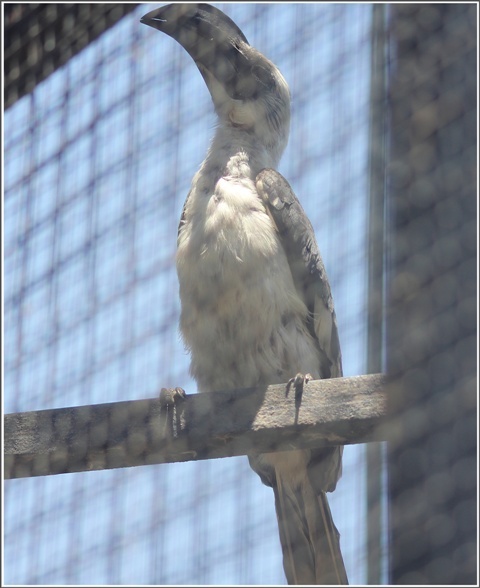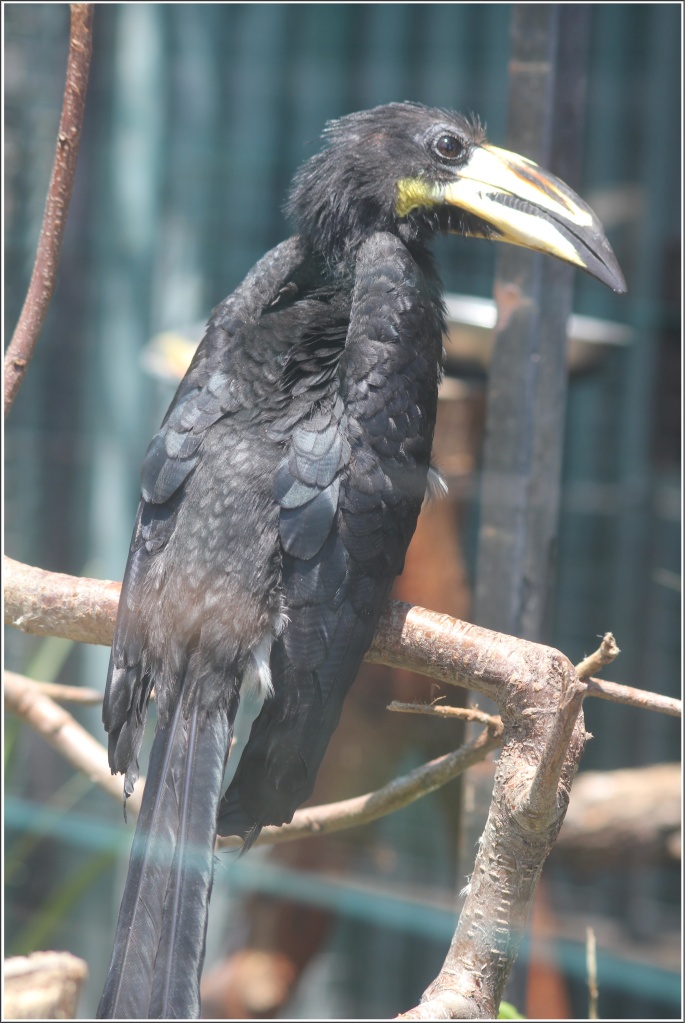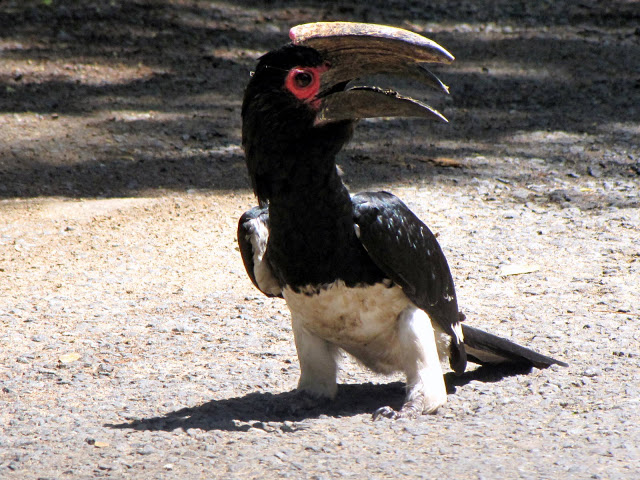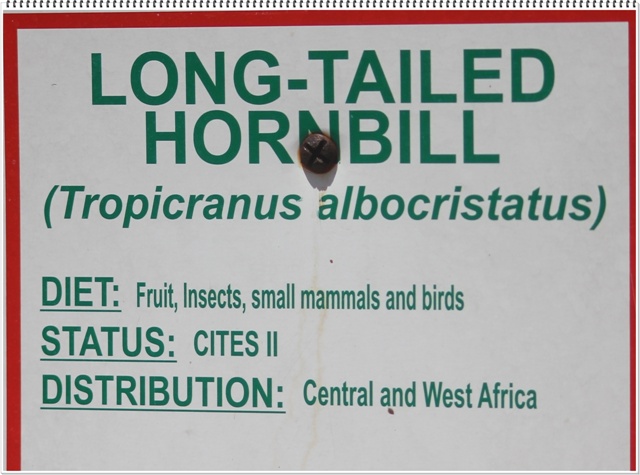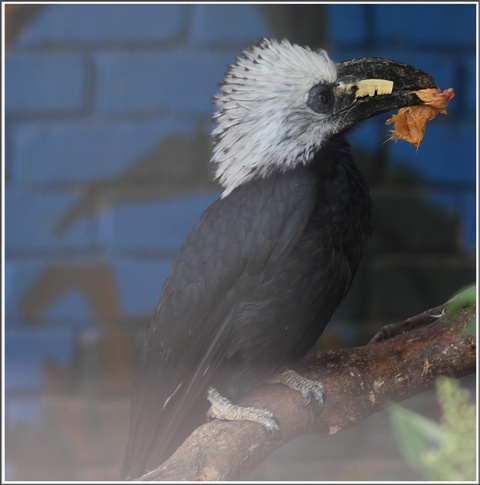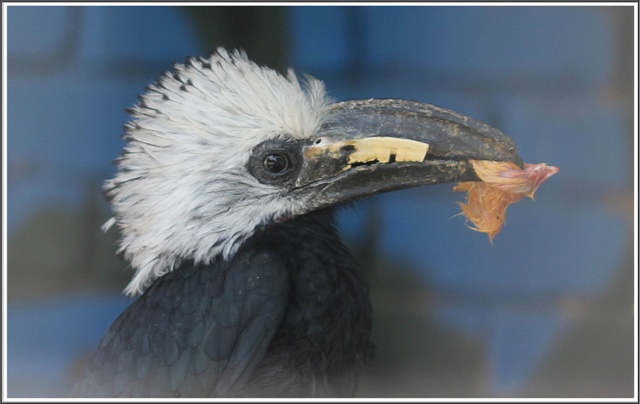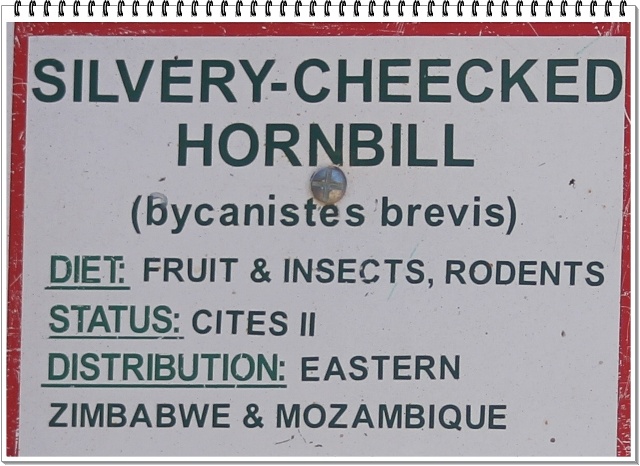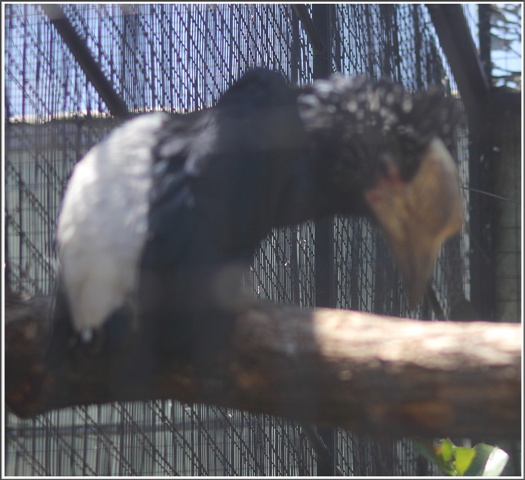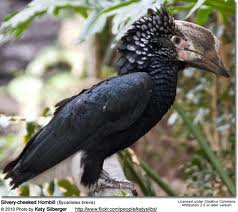


You are close to winning the Toko Award 2012, Dewi -O
Great info comming through
 Von der Decken’s Hornbill
Habitat
Von der Decken’s Hornbill
Habitat
Von der Decken’s hornbill is found across eastern Africa from central and eastern Tanzania, throughout Kenya, and into southeastern Ethiopia and Somalia. It favors the open bush and scrubby woodlands of the dry savanna and arid steppe.
Description
Height: 17-20 inches; Weight: 4-6 ounces
Females are smaller and lighter than the males. The Von der Decken’s hornbill has mainly white plumage on its body with black wings and a black tail. The male has a very distinctive red and ivory two-tone bill. The female has an entirely black bill. Neither the male nor the female have a casque on their bill, as do some other species of hornbill. A casque is a hollow outgrowth of the top of the mandible of the bill made of keratin.
A long bill allows the Von der Decken’s hornbill to forage and collect food items from branches they could not reach otherwise. Their short, broad, and rounded wings are efficient for short intervals of flight but not ideal for extended periods.
Lifespan: In the Wild about 10 years
Behaviors
Hornbills are diurnal birds, often roosting at regular sites in the outer branches of trees, or right against their trunks. At first light they often spend time preening and calling.
They are usually found in pairs feeding on the ground. Outside of the breeding season they often form in flocks.
The Von der Decken’s hornbill vocalizes using loud monotone calls, especially in the mornings.
Other behaviors they participate in are sunbathing, bathing in the rain, toying with sticks, tossing leaves or debris, bill wrestling, or jumping on or over each other.
Reproduction
Von der Decken’s hornbills are believed to breed as monogamous pairs (having only one mate at a time). They nest in tree cavities. The pair works together to partially close up the entrance with a mixture of mud, droppings, and food items such as fruit pulp until the female can barely fit through to enter the nest.
The male continues to seal her in, and she also assists from the inside using food and feces until only a narrow opening remains. The male is then completely responsible for feeding his mate and the upcomingchicks for the next 2 months. Clutch size is usually 2-3 white eggs, incubated for about 46 days. Each chick hatches about a day apart. During incubation, the female completely molts (sheds) her flight feathers and is unable to fly.
To prevent poor sanitation, the female cleans out the nest periodically to remove feces.
After about 3 months, the female and the chicks have grown too large for the nest and the female breaks out. She then rebuilds the seal and assists the male with feeding for the next 2 weeks until the chicks emerge.
Diet
Snails, mice, nestling birds, lizards, tree frogs, seeds, fruit, berries, insects
Fun Facts
The Von der Decken’s hornbill was named after the German explorer Baron Karl von der Decken (1833-1865).
The Von der Decken’s hornbill and the dwarf mongoose of the East African savannah have a unique relationship. The mongooses disturb insects for the hornbills to eat, while the hornbills provide increased vigilance (alertness for predators) allowing these mammals more time to feed.
There are 54 species of hornbills in the world.
Hornbills are the only birds in the world in which the first 2 vertebrae (neck bones: axis and atlas) are fused together.
Hornbills only have a two-lobed kidney, while all other birds have a three-lobed kidney.










